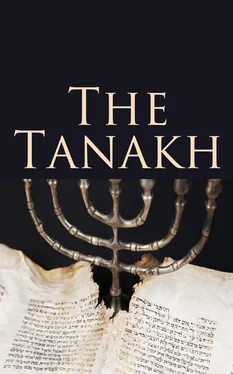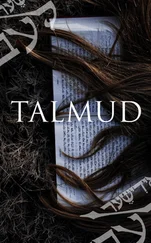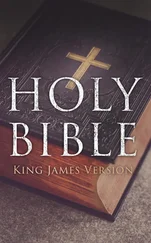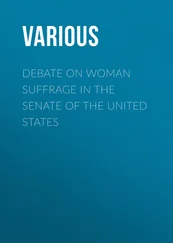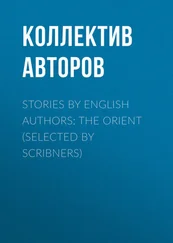Various Authors
The Jewish Bible – The Holy Scriptures According to the Masoretic Text
Translator: Max Margolis, JPS
e-artnow, 2021
Contact: info@e-artnow.org
EAN: 4064066388584
Preface
Table of Scriptural Readings
Genesis
Exodus
Leviticus
Numbers
Deuteronomy
Joshua
Judges
I Samuel
II Samuel
I Kings
II Kings
Isaiah
Jeremiah
Ezekiel
Hosea
Joel
Amos
Obadiah
Jonah
Micah
Nahum
Habakkuk
Zephaniah
Haggai
Zechariah
Malachi
Psalms
Proverbs
Job
The Song of Songs
Ruth
Lamentations
Ecclesiastes
Esther
Daniel
Ezra
Nehemiah
I Chronicles
II Chronicles
Table of Contents
The sacred task of translating the Word of God, as revealed to Israel through lawgiver, prophet, psalmist, and sage, began at an early date. According to an ancient rabbinic interpretation, Joshua had the Torah engraved upon the stones of the altar (Joshua viii. 32) not in the original Hebrew alone, but in all the languages of mankind, which were held to be seventy, in order that all men might become acquainted with the words of the Scriptures. This statement, with its universalistic tendency, is, of course, a reflex of later times, when the Hebrew Scriptures had become a subject of curiosity and perhaps also of anxiety to the pagan or semi-pagan world.
While this tradition contains an element of truth, it is certain that the primary object of translating the Bible was to minister to a need nearer home. Upon the establishment of the Second Commonwealth under Ezra and Nehemiah, it became imperative to make the Torah of God 'distinct and giving sense' through the means of interpretation (Nehemiah viii. 8 and xiii. 24), that the Word of God might be understood by all the people. The Rabbis perceived in this activity of the first generation of the Sopherim the origin of the Aramaic translation known as the Targum, first made orally and afterwards committed to writing, which was necessitated by the fact that Israel had forgotten the sacred language, and spoke the idiom current in a large part of western Asia. All this, however, is veiled in obscurity, as is the whole inner history of the Jews during the Persian rule.
The historic necessity for translation was repeated with all the great changes in Israel's career. It is enough to point to the Septuagint, or the Greek translation of the Scriptures, the product of Israel's contact with the Hellenistic civilization dominating the world at that time; to the Arabic translation by the Gaon Saadya, when the great majority of the Jewish people came under the sceptre of Mohammedan rulers; and to the German translation by Mendelssohn and his school, at the dawn of a new epoch, which brought the Jews in Europe, most of whom spoke a German dialect, into closer contact with their neighbours. These translations are all historical products intimately connected with Israel's wanderings among the nations and with the great events of mankind in general.
Ancient and continuous as this task of translation was, it would be a mistake to think that there were no misgivings about it. At least it is certain that opinions were divided as to the desirability of such undertakings. While Philo and his Alexandrian coreligionists looked upon the translation of the Seventy as a work of inspired men, the Palestinian Rabbis subsequently considered the day on which the Septuagint was completed as one of the most unfortunate in Israel's history, seeing that the Torah could never be adequately translated. And there are indications enough that the consequences of such translations were not all of a desirable nature. However, in view of the eagerness with which they were undertaken almost in every land and in every great epoch of the world's history, it is evident that the people at large approved of such translations, thinking them to be a heave-offering to the Lord of each newly acquired vernacular adopted in the course of the ever-changing conditions of history, and in particular a tribute to the beauty of Japheth dwelling in the spiritual tents of Israel.
The greatest change in the life of Israel during the last two generations was his renewed acquaintance with English-speaking civilization. Out of a handful of immigrants from Central Europe and the East who saw the shores of the New World, or even of England and her colonies, we have grown under Providence both in numbers and in importance, so that we constitute now the greatest section of Israel living in a single country outside of Russia. We are only following in the footsteps of our great predecessors when, with the growth of our numbers, we have applied ourselves to the sacred task of preparing a new translation of the Bible into the English language, which, unless all signs fail, is to become the current speech of the majority of the children of Israel.
The need of such a translation was felt long ago. Mention may here be made of the work of Isaac Leeser in America, which was both preceded and followed by two translations produced in England: the one by Dr. A. Benisch, the other by Dr. Michael Friedländer. The most popular, however, among these translations was that of Leeser, which was not only the accepted version in all the synagogues of the United States, but was also reproduced in England. Its great merit consisted in the fact that it incorporated all the improvements proposed by the Mendelssohn School and their successors, whose combined efforts were included and further developed in the so-called Zunz Bible, which enjoyed a certain authority among German Jews for several generations. With the advance of time and the progress made in almost all departments of Bible study, it was found that Leeser's translation would bear improvement and recasting.
Steps leading to the preparation of a new translation into the English language were taken by the Jewish Publication Society of America in 1892. It was intended to secure, if possible, through the co-operation of scholars in the United States and in Great Britain, a new translation of each book, and to place it in the hands of an Editorial Committee, who by correspondence with the translators should harmonize the results of the work of the individual contributors. This method was followed until 1901 under the general direction of Doctor Marcus Jastrow, Editor-in-Chief, with Doctor Kaufman Kohler and Doctor Frederick de Sola Mendes as the other members of the Editorial Committee. 1
It became apparent in 1901 that by this procedure the publication of a translation of the entire Hebrew Bible would be indefinitely delayed, and accordingly the Book of Psalms, translated by Doctor Kohler and revised by his colleagues, was given to the press and issued in 1903. The death of Doctor Jastrow in that year required the formation of a new committee under the chairmanship of Doctor Solomon Schechter. This committee, however, soon found that the method adopted was too complex, and that it was impossible to accomplish by correspondence the extensive work required.
In 1908 the Jewish Publication Society of America and the Central Conference of American Rabbis reached an agreement to co-operate in bringing out the new translation upon a revised plan of having the entire work done by a Board of Editors instead of endeavoring to harmonize the translations of individual contributors. As a result of this understanding the present Board, composed of Doctor Solomon Schechter, Doctor Cyrus Adler, and Doctor Joseph Jacobs, representing the Jewish Publication Society of America, and Doctor Kaufman Kohler, Doctor David Philipson, and Doctor Samuel Schulman, representing the Central Conference of American Rabbis, was constituted, and by mutual agreement Professor Max L. Margolis was chosen as the seventh member, he to be the Editor-in-Chief of the work and Secretary to the Editorial Board, of which Doctor Cyrus Adler was elected Chairman. Incidentally the selection thus made resulted in an equal representation of the Jewish Theological Seminary of America at New York, of the Hebrew Union College at Cincinnati, and of the Dropsie College for Hebrew and Cognate Learning at Philadelphia. For one year Professor Israel Friedlaender acted as a member of the Board in the stead of Doctor Schechter.
Читать дальше
